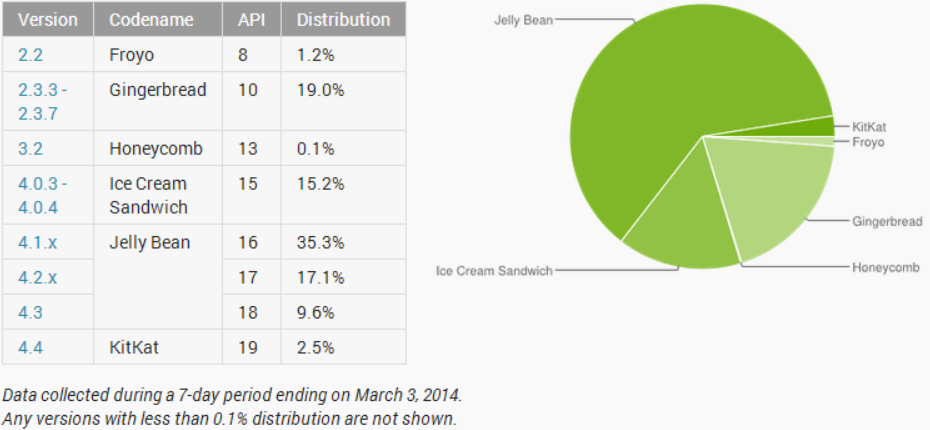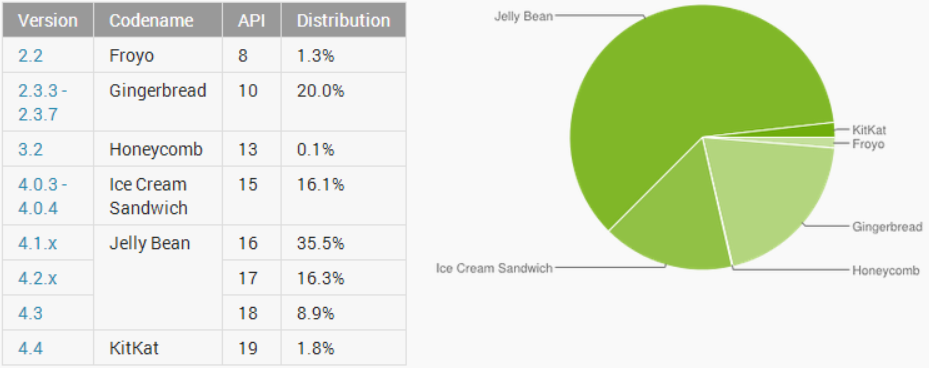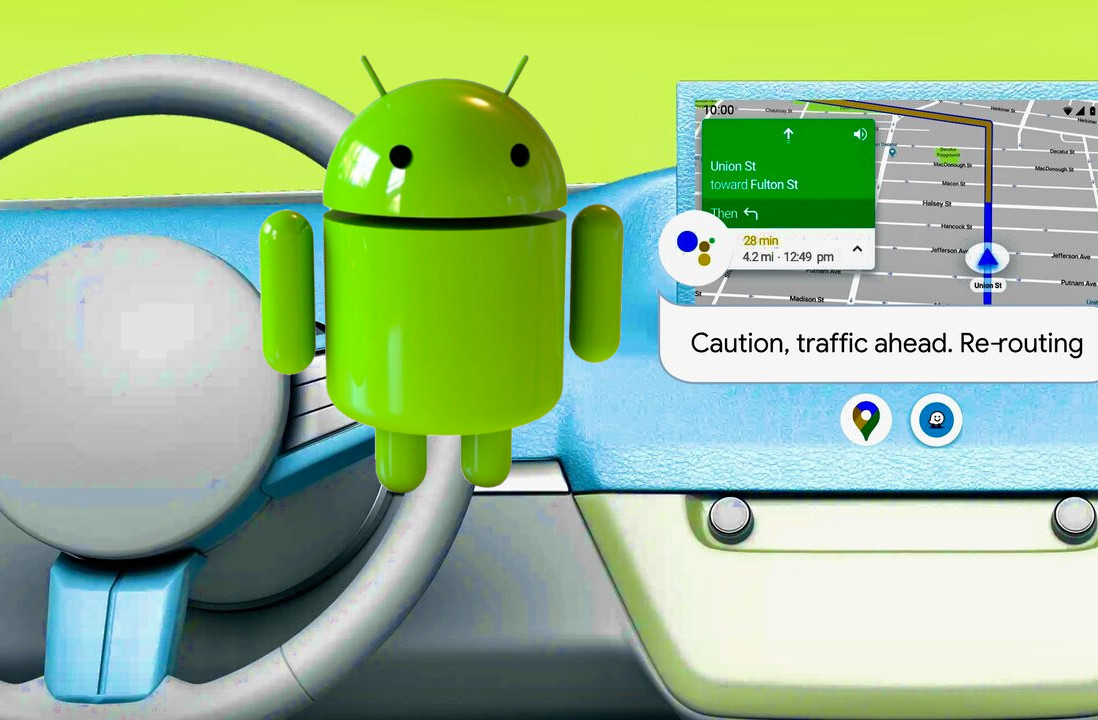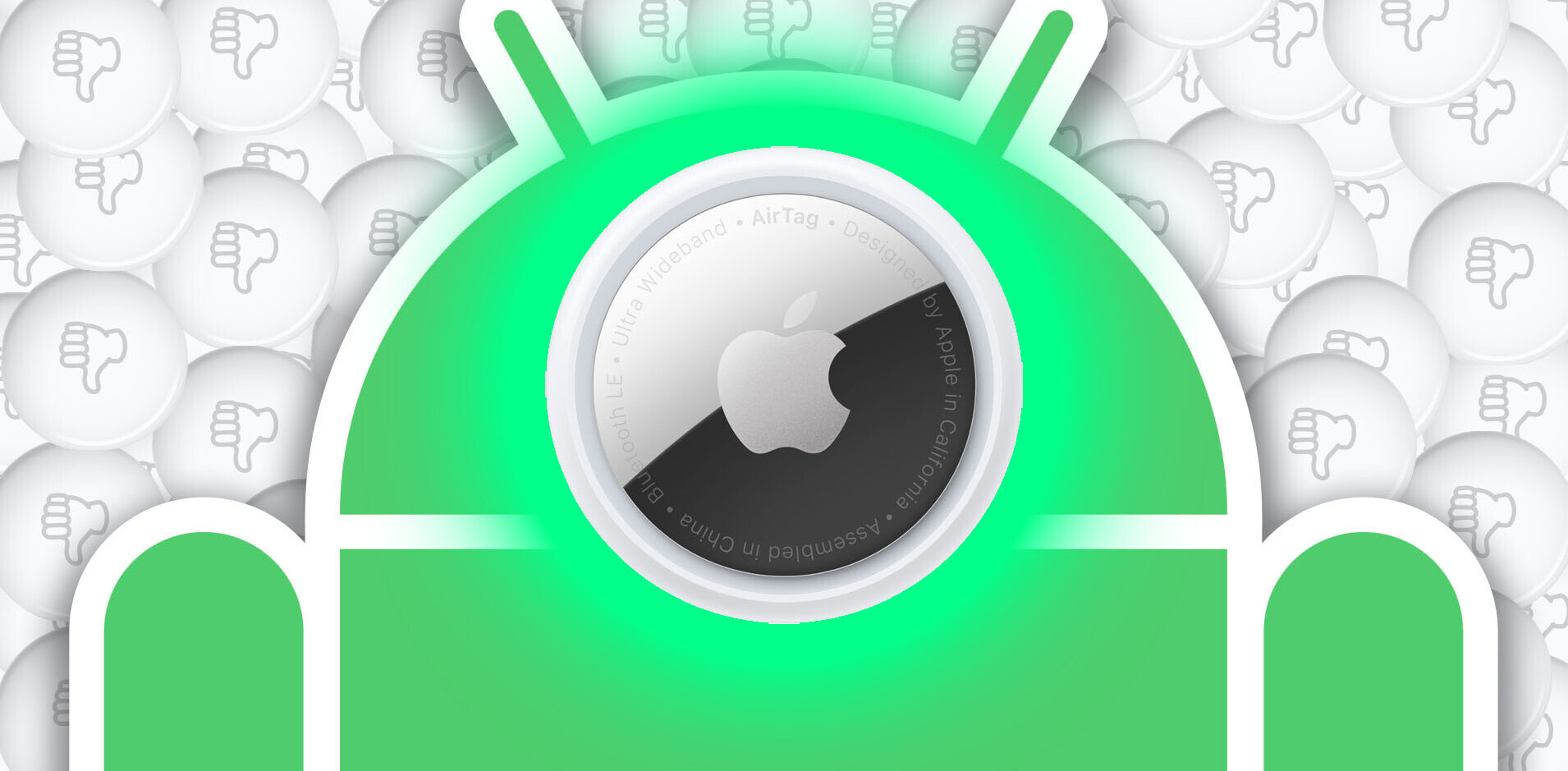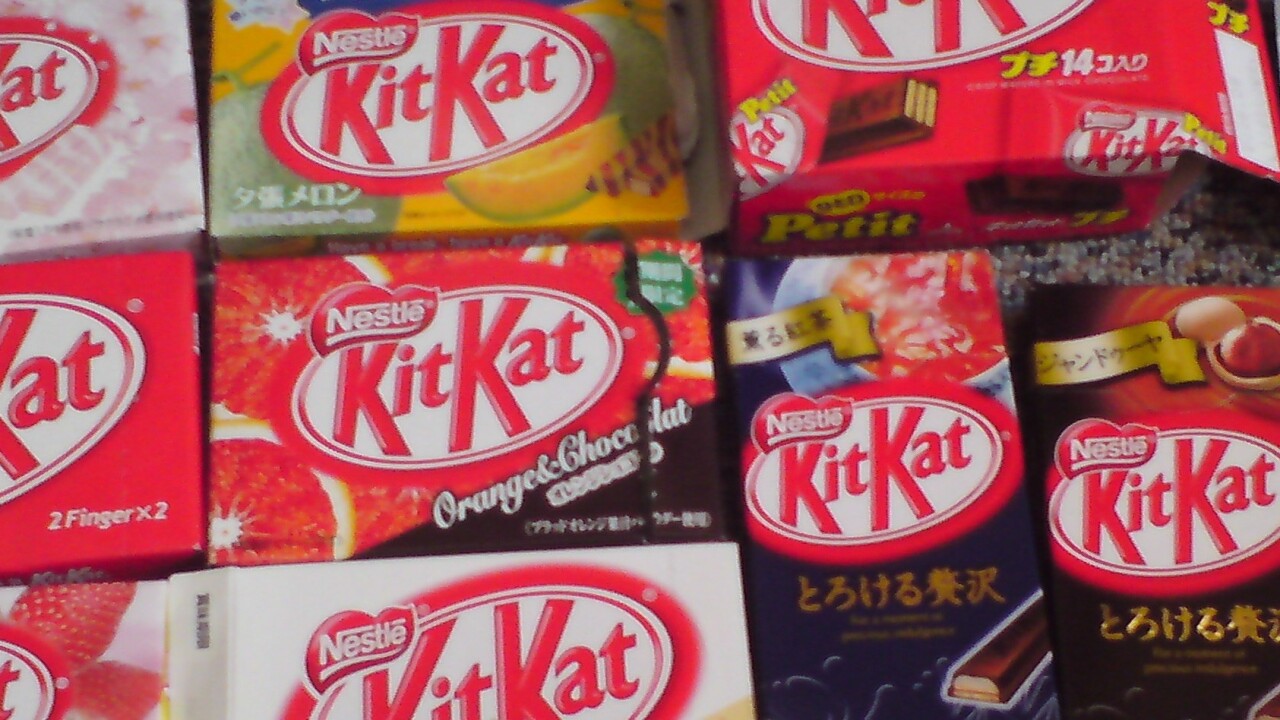
Google today updated its Platform Versions page for Android, revealing that KitKat has hit a 2.5 percent adoption rate. Meanwhile, Jelly Bean continues to steadily grow, maintaining its dominance on Google Play. All other Android versions have lost share.
Breaking down the numbers more specifically, 62 percent of Android users are using Jelly Bean, 15.2 percent have devices powered by Ice Cream Sandwich (ICS), 0.1 percent are on Honeycomb, 19.0 percent are stuck with Gingerbread, and 1.2 percent unfortunately still have Froyo. Here’s how the current Android landscape looks in graph and table form:
Between February and March, Android 4.4 grabbed an additional 0.7 percentage points (moving from 1.8 percent to 2.5 percent), Android 4.3 increased 0.7 percentage points (from 8.9 percent to 9.6 percent), Android 4.2 gained 0.8 percentage points (from 16.3 percent to 17.1 percent), and Android 4.1 slipped 0.2 percentage pionts (from 35.5 percent to 35.3 percent). Android 4.0, meanwhile, continued its slow decline: it dropped another 0.9 points (from 16.1 percent to 15.2 percent).
Gingerbread took the biggest hit, dropping 1.0 points (from 20 percent to 19 percent), Honeycomb didn’t budge at 0.1 percent, and Froyo lost 0.1 percent points (from 1.3 percent to 1.2 percent). Despite all this, the bigger picture hasn’t changed: the Jelly Beans (June 2012, November 2012, and July 2013) are first, Gingerbread (released December 2010) is second, ICS (October 2011) is third, and KitKat (October 2013) is fourth.
For reference, here’s the data from February:
As always, we have to remember that back in April 2013, Google tweaked its algorithm in regards to how it counts users for these figures, measuring when users visit the Google Play Store instead of checking-in to Google servers. The change skews the data by giving an inaccurate picture of Android fragmentation, but at the same time it helps developers target users who are actively using Google Play.
Right now it appears very unlikely that we’ll see Android 4.4 KitKat in a leadership position in 2014. We’ll see it pass ICS and Gingerbread, but it likely won’t steal the crown from Jelly Bean – the next Android version will come first.
Top Image Credit: suhakri_hsu / Flickr
Get the TNW newsletter
Get the most important tech news in your inbox each week.
